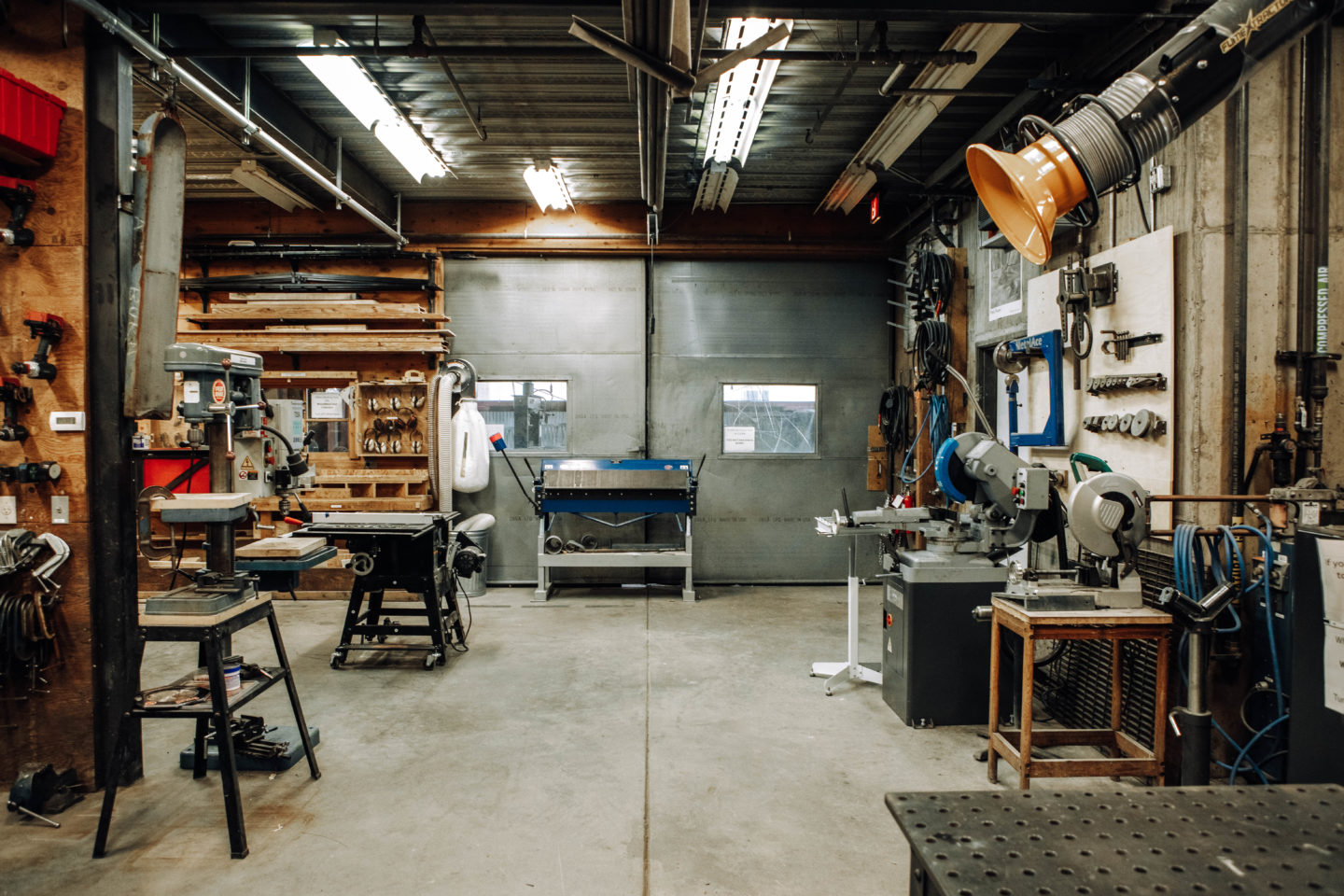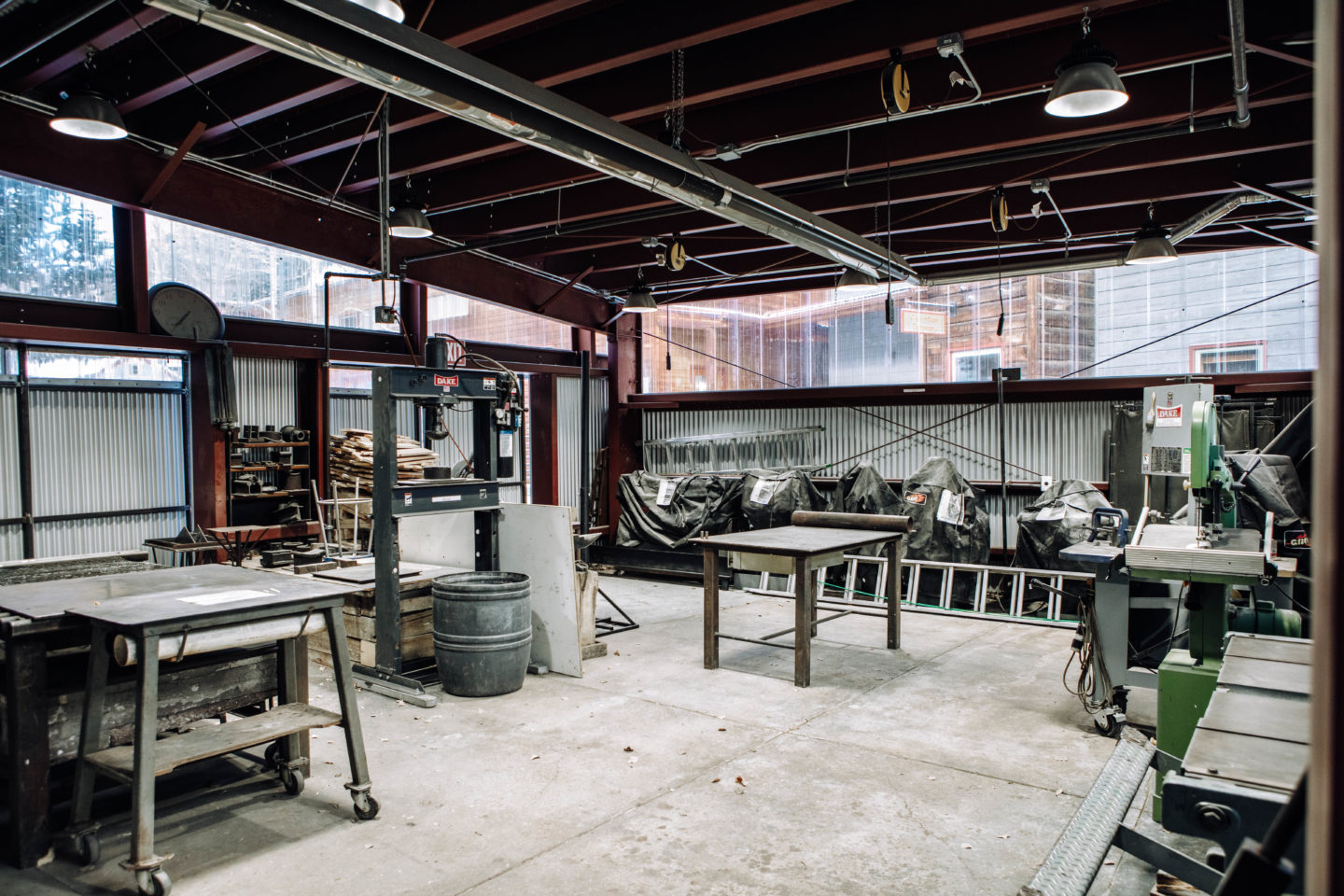Sculpture
Express your creativity and vision by exploring the limitless art of sculpture. At Anderson Ranch, our sculpture program offers a vibrant spectrum of workshops that reflect a variety of studio practices. At the confluence of tradition and technology, these programs are material and technique-rich, ranging from classical metal fabrication to experimental digital production.
Students work in communal and interactive studios designed for all levels of experience, supporting traditional and nontraditional methods. The sculpture studios are fully equipped with advanced machinery and offer additional outdoor covered workspace.
Our renowned sculpture faculty work closely with students through critical discussions, material demonstrations and individual assistance. Instructors encourage exploration and experimentation, emphasizing process and idea development. We complement this with a focus on process and sound construction. You leave with far more than finished pieces—you walk away with the tools and inspiration required to elevate your studio practice.

William Lanzillo
Studio Coordinator, Sculpture
William Lanzillo is a sculptor whose work includes objects, performances, and interactive experiences. He received a BA from Carleton College in 2019, studying both psychology and studio art. He recently earned an MFA in Sculpture from Cranbrook Academy of Art in 2023.






Anderson Ranch Campus
Upcoming Workshops

-
II
Level II
Students have basic knowledge of 2-D art making including form, negative space, value and line.
-
III
Level III
Students have formal training in critical issues of 2-D art making, experience with public critiques and a solid portfolio of their artwork.
Jul 14 - 18, 2025
9AM-5PM
Sculptural Paintings
Damien Davis
Tuition $1,415
Code D0714-25
Create a dynamic sense of wall power by pushing two-dimensional painting onto three-dimensional surfaces. Incorporate physical elements, painting on a variety of substrates and collage to develop a sense of physicality, space, and texture. Painters and sculptors alike are invited to delve into the painterly world of stepping outside of the rectangular picture plane to incorporate found objects and alternative painting surfaces while maintaining painting as the primary medium. Lectures include an exploration of artists who make sculptural paintings, and discussion centers on how a painting changes when the focus shifts to painting as object.

-
O
Open to All
Students of any skill and knowledge level.
Jul 14 - 18, 2025
9AM-5PM
Sculptural Paper Casting
Leah Aegerter
Tuition $1,290
Code S0707-25
In this foundational paper-making workshop, students transform pulp into unique cast-paper sculptures. Starting with dry abaca pulp, we dive into the process of reconstituting, blending, dying, and casting sheets with a traditional mold and deckle. Abaca paper is characterized by long fibers with impressive wet strength, making it ideal for manipulation. We mold the wet sheets onto objects from home, around the studio, or in the environment. Sewing and gluing aid in combining dried paper objects into small-scale sculptural creations.

-
O
Open to All
Students of any skill and knowledge level.
Jul 21 - 25, 2025
9 AM - 5 PM
Papermaking Meets Cyanotype
Kate Aitchison
Tuition $1,250
Code P0833-25
This immersive workshop invites participants to delve into the art of handmade papermaking and the alternative photographic process of cyanotype. Participants explore the natural world as a source of both materials and inspiration, emphasizing the inherently place-based nature of these techniques. The first part of the workshop focuses on collecting and processing local plant materials, including invasive species, to create handmade paper. Participants learn essential papermaking techniques, such as fiber preparation, pulping, sheet formation, and drying, while discovering which plants are best suited for papermaking. In the second phase, participants investigate photographic imagery through the lens of place and connection. Using cyanotype—a historic photographic process known for its vivid blue tones—participants design image-based compositions that integrate seamlessly with their handmade paper. By merging organic materials with photographic imagery, the workshop creates a unique opportunity to explore the intersection of craft, nature, and storytelling. Ideal for artists and creatives interested in sustainable practices, alternative photography, and the expressive potential of handmade paper, this workshop fosters innovation and a deep appreciation for place-based artmaking.


